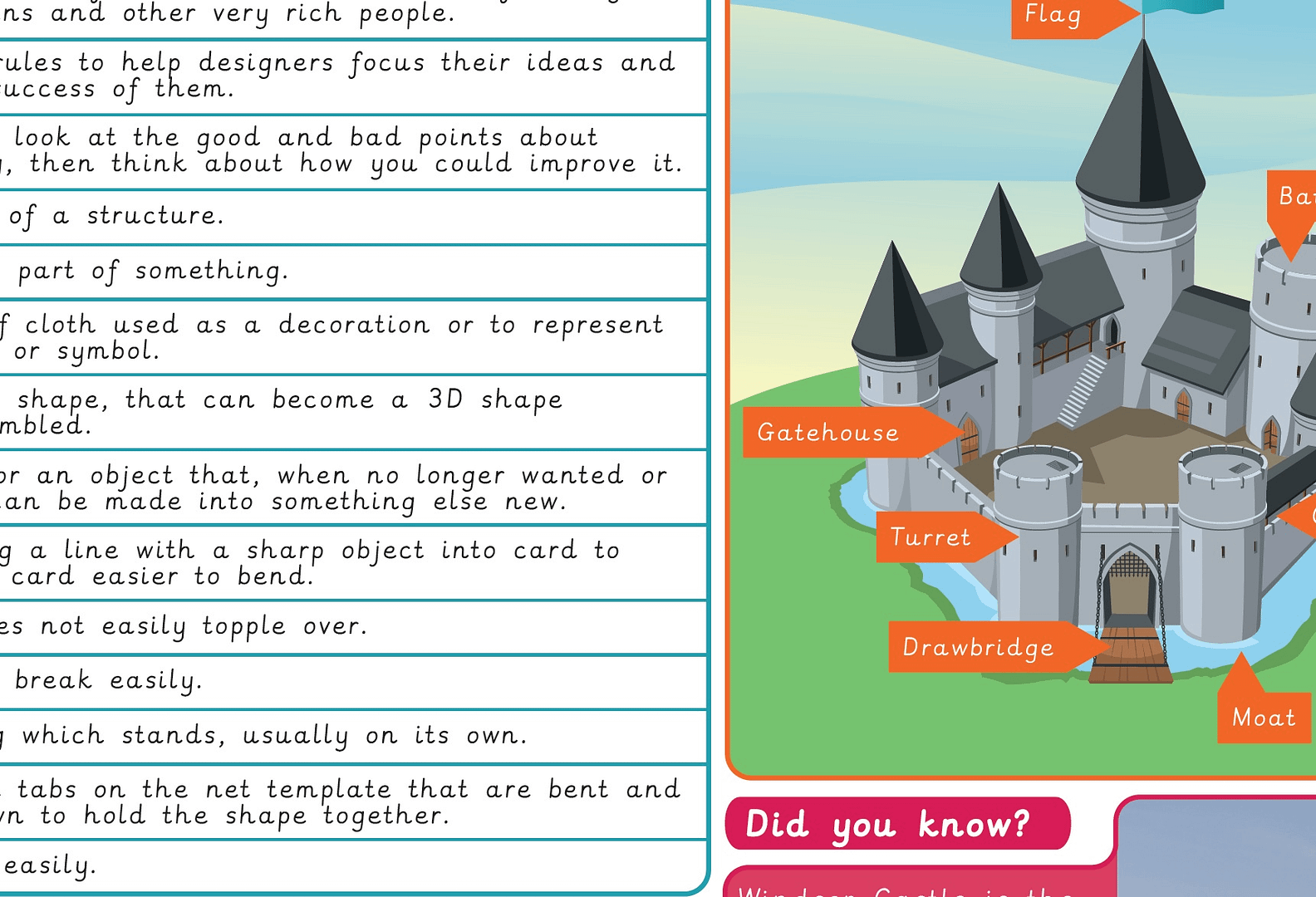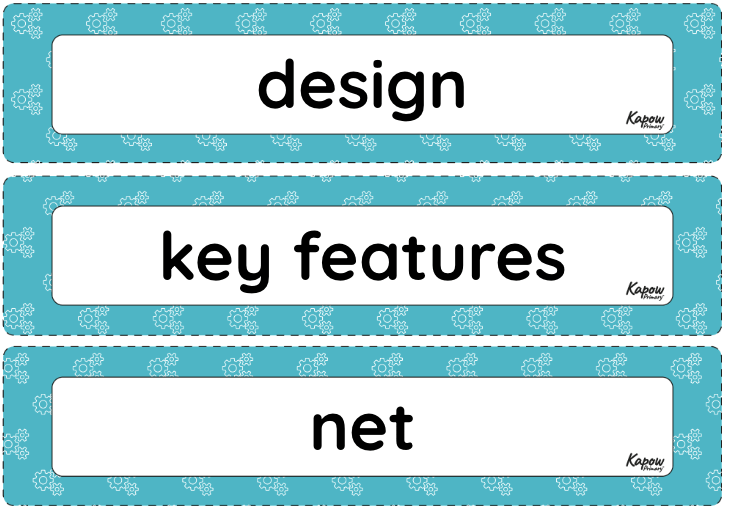Structures: Constructing a castle
This unit hub can be used to inform your medium-term plan and to navigate to related resources.
- Subjects >
- Design and technology >
- Lower key stage 2 >
- Year 3 >
-
Structures: Constructing a castle
Unit outcomes
Pupils who are secure will be able to:
- Draw and label a simple castle that includes the most common features.
- Recognise that a castle is made up of multiple 3D shapes.
- Design a castle with key features which satisfy a given purpose.
- Score or cut along lines on the net of a 2D shape.
- Use glue to securely assemble geometric shapes.
- Utilise skills to build a complex structure from simple geometric shapes.
- Evaluate their work by answering simple questions.
Suggested prior learning
Structures: Baby Bear’s chair
Get startedLesson plans
Lesson 1: Features of a castle
- To recognise how multiple shapes (2D and 3D) are combined to form a strong and stable structure.
Lesson 2: Designing a castle
- To design a castle.
Lesson 3: Nets and structures
- To construct 3D nets.
Lesson 4: Building a castle
- To construct and evaluate my final product.
Key skills
Related content
Unit resources

Knowledge organiser – D&T Y3: Constructing a castle
Aimed at pupils, a single page which gives key facts and definitions from the unit.

Vocabulary display – D&T Y3: Structures: Constructing a castle
A display version of the key vocabulary from the Structures: Constructing a castle unit.
Cross-curricular opportunities
History
‘Pupils should be taught about:
- a study of an aspect or theme in British history that extends pupils’ chronological knowledge beyond 1066′
See National curriculum - History key stages 1 to 2.
Mathematics
‘Pupils should be taught to:
- draw 2-D shapes and make 3-D shapes using modelling materials; recognise 3-D shapes in different orientations and describe them’
See National curriculum - Mathematics key stages 1 to 2.
British values: Mutual respect.
Suggested next steps
Structure: Pavilions
Pupils build on their experience of castle design, from assembling geometric shapes to construct a secure structure, to help them design and create stable, free-standing pavilions.

